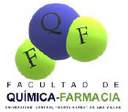Executive Secretary

7th International Symposium of Pharmaceutical Sciences
VII SICF
Abstract
For a long time, medicinal plants have played a very important role to treat various disorders and ailments in people’s health. Nowadays, the use of herbal remedies as a way of treatment is still very important for human beings. Ethnobotanical studies are a valuable tool to achieve the documentation of this ethnomedicinal knowledge. Cuba has a high diversity and endemism of Cuban flora, as well as the wide knowledge of medicinal plants in his inhabitants, that's why the present study is aimed to explore and report the etnhomedicinal knowledge of plants used by inhabitants of Holguín, Eastern Region, Cuba. The ethnomedicinal information was collected through interviews based on a semi-structured questionnaire. The collected data were analyzed through use value (UV), informant consensus factor (Fic) and fidelity level (FL). A total of 195 species of plants distributed in 166 genera belonging to 70 families were identified for the treatment of 17 ailment categories. The most treated conditions were digestive and liver disorders. The most important species according to their use value were Lippia alba (Mill.) N.E. Br. ex Britton & P. Wilson (0.236) and Annona muricate L. (0.194). Cancer and tumors had the Fic value of 0.94. A total of 19 species has a highest FL of 100 percent. This was the first ethnobotanical survey conducted in Holguín region, which will contribute to preserve valuable information of medicinal plants that may otherwise be lost to future generations.
Resumen
For a long time, medicinal plants have played a very important role to treat various disorders and ailments in people’s health. Nowadays, the use of herbal remedies as a way of treatment is still very important for human beings. Ethnobotanical studies are a valuable tool to achieve the documentation of this ethnomedicinal knowledge. Cuba has a high diversity and endemism of Cuban flora, as well as the wide knowledge of medicinal plants in his inhabitants, that's why the present study is aimed to explore and report the etnhomedicinal knowledge of plants used by inhabitants of Holguín, Eastern Region, Cuba. The ethnomedicinal information was collected through interviews based on a semi-structured questionnaire. The collected data were analyzed through use value (UV), informant consensus factor (Fic) and fidelity level (FL). A total of 195 species of plants distributed in 166 genera belonging to 70 families were identified for the treatment of 17 ailment categories. The most treated conditions were digestive and liver disorders. The most important species according to their use value were Lippia alba (Mill.) N.E. Br. ex Britton & P. Wilson (0.236) and Annona muricate L. (0.194). Cancer and tumors had the Fic value of 0.94. A total of 19 species has a highest FL of 100 percent. This was the first ethnobotanical survey conducted in Holguín region, which will contribute to preserve valuable information of medicinal plants that may otherwise be lost to future generations.
About The Speaker

MsC. Rosalia González Fernández






